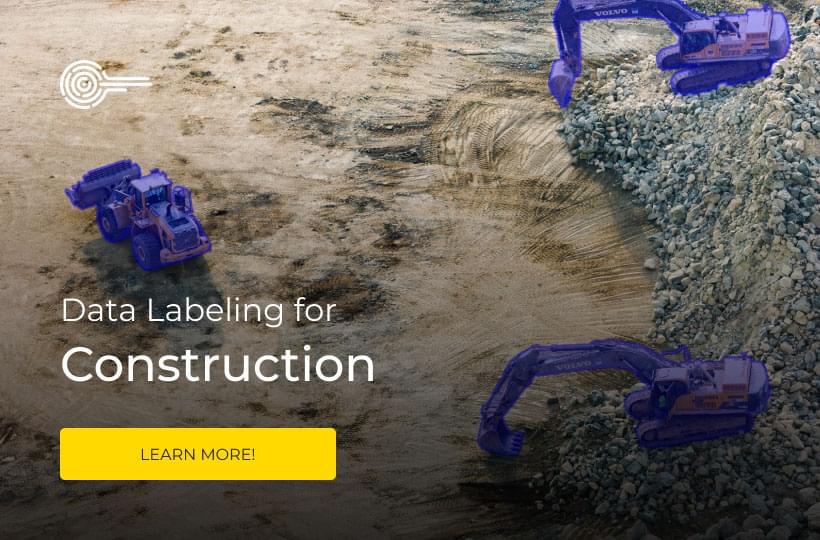Keeping Equipment Secure With Computer Vision

The construction sector has always been vulnerable to global economic changes. It experiences rapid growth and stagnant periods. It is also an industry that has been slow to embrace digitisation and new technology. However, computer vision models are helping to change this whilst ensuring that construction companies remain profitable regardless of the economic headwinds.
AI systems are being integrated with construction processes to reduce costs and improve safety. One example of AI innovation in this sector is automated equipment monitoring. A use case that promises to protect valuable equipment and drive down expenses. Developers are working with data annotation experts, like Keymakr, to create exceptional training datasets for these applications.
Firstly, this blog will look at the challenges of equipment tracking on construction sites. Secondly, we will show how AI systems can make tracking simpler. Thirdly, we will identify some of the annotation methods that support these applications. And finally, we will identify the key advantages of data annotation outsourcing.
The challenges of equipment monitoring
Construction sites are large, complex environments, full of people and valuable equipment. As a result, it is very common for tools or even vehicles to go missing. Sometimes tools are misplaced, or not returned to a central store. Occasionally valuable equipment can also be stolen from construction sites.
Losing track of equipment can be a regular annoyance for site managers. Building construction slows significantly when workers don’t have the right tools and vehicles. However, keeping tabs on hundreds of individual items is an administrative headache. AI can help managers avoid this drain on time and resources.
Video annotation | Keymakr
AI tracking makes life easier
Computer vision models are good at recognising and recording objects. Object recognition enables the following applications. These systems are poised to change how we track equipment across a range of industries:
- Tools: AI powered cameras can monitor workshops and tool boards. Workers can scan out tools using qr tools. Computer vision models can then monitor tool boards and recognise when individual tools are missing. These systems can warn managers when tools are not in their right place.
- Vehicles: It can be hard to keep track of vehicles over large construction sites. AI equipped drones are now being used to survey sites and locate vehicles. Computer vision models can also sound the alarm when a vehicle goes missing in digital images from day to day.

Important annotation methods
The use cases detailed above rely on precise image and video annotation. The following annotation methods help equipment tracking AIs to function reliably:
- Video annotation: Video data reflects the fast moving world of construction. However, video annotation requires a significant investment of time and resources. Outsourcing to video annotation experts can save AI companies time and money.
- Polygon annotation: This annotation type is used to capture irregularly shaped objects. By connecti mg lines around the pixel edge of a tool like a hammer, annotators ensure that AI modes can recognise tools in the real world.

Getting the most out of the annotation process
Construction tracking AI can simplify an annoying aspect of construction site management. Keymakr is a data annotation provider that can help AI companies in this sector:
- Data creation: Keymakr has in-house production facilities. This means that companies can specify the data that they need.
- Verification: Keymakr uses three layers of human verification and an additional AI check to make sure that annotations stay precise.
Innovative tools: Keymakr’s proprietary annotation tool is designed to streamline annotation. Unique project management features help speed up annotation and maintain quality.
Contact a team member to book your personalized demo today.



